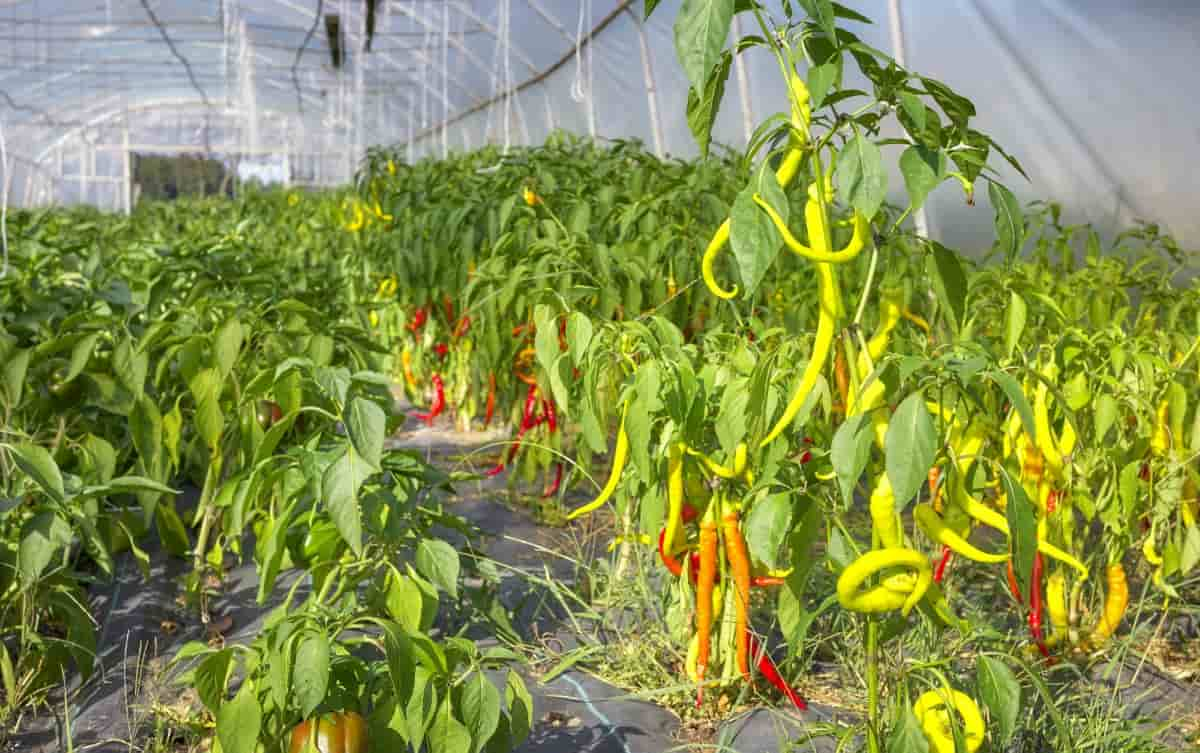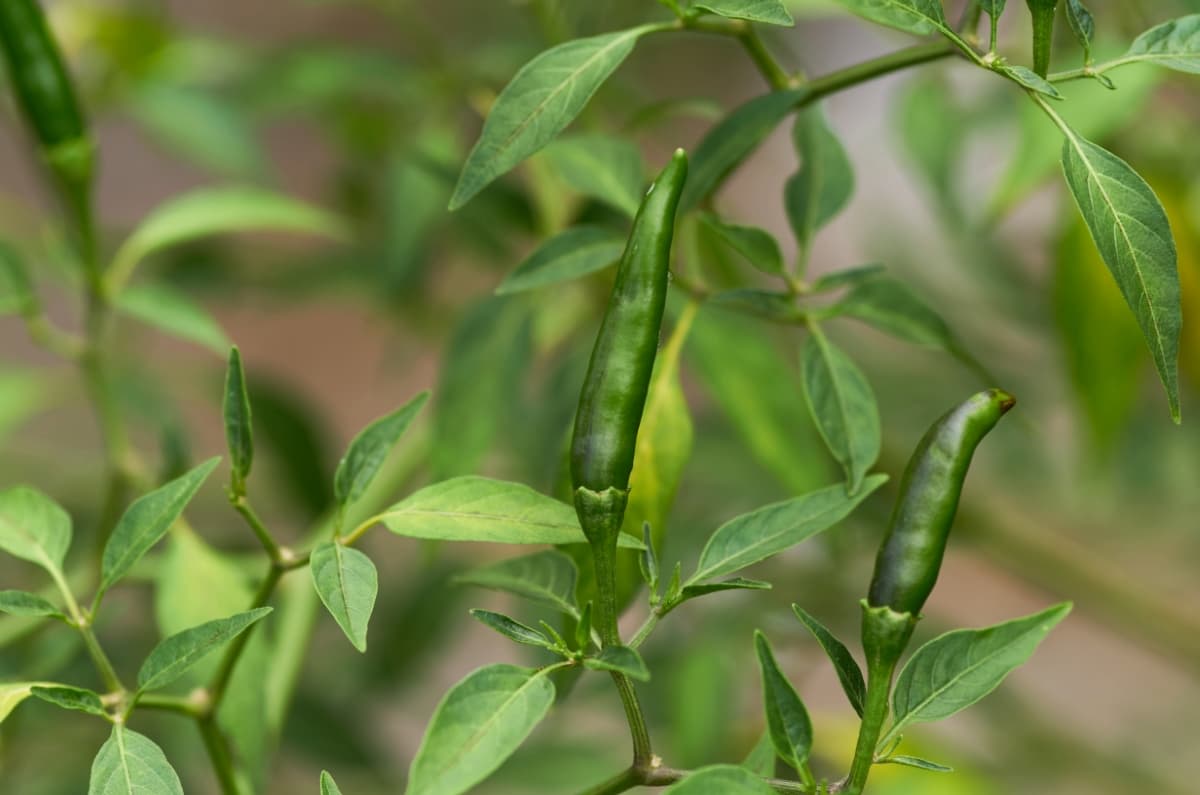Chilli plants are a common choice for many gardeners due to their vibrant colors and spicy flavors. This virus can wreak havoc on your precious Chilli crop, causing stunted growth, leaf curling, yellowing, and even complete yield loss. Controlling the Gemini Virus in Chilli plants is crucial for maintaining food security and livelihoods in regions that heavily rely on chili production.

How to Control Gemini Virus in Chilli
Understand the Life Cycle of Gemini Virus in Chilli Plants
These tiny insects feed on infected plants and acquire the virus in the process. Once they move on to healthy Chilli plants, they transmit the virus through their saliva while feeding. Once inside the plant, the Gemini Virus replicates within the cells of various plant tissues, including leaves, stems, and fruits. As it multiplies, it causes characteristic symptoms such as leaf curling, stunted growth, yellowing of leaves, and reduced fruit production.
The transmission of the Gemini Virus can occur rapidly in warm weather conditions when whitefly populations are high. Therefore, early detection is vital for effective management. Regular scouting and monitoring for signs of viral infection can help identify affected plants promptly. Preventing infestations by implementing appropriate cultural practices like maintaining proper sanitation in greenhouses or fields can significantly reduce Gemini Virus incidence.
Understanding the life cycle of Gemini Virus provides valuable insights into developing integrated pest management strategies to control its spread effectively. By understanding the impact of the Gemini Virus on Chilli plants and implementing effective control measures, farmers can protect crops and ensure a successful harvest.
Best Chemical Treatments for Controlling Gemini Virus in Chilli
The most commonly used chemicals for controlling the Gemini Virus are insecticides. These chemicals target the insects that transmit the virus, such as whiteflies and aphids. By eliminating these vectors, we can significantly reduce the spread of the disease within our Chilli crops. Another option is using systemic pesticides, which are absorbed by plants and circulate through their tissues. This helps protect both existing and new growth from virus infection.
It’s crucial to follow label instructions carefully when applying these pesticides to avoid any negative impacts on human health or the environment. Integrated Pest Management (IPM) strategies that combine various control methods, including cultural practices and crop rotation, should be implemented for sustainable management of this viral disease. Remember to always consult with agricultural experts or local extension agencies before implementing any chemical treatment on your Chilli crops.
Biological Control Methods for Managing Gemini Virus in Chilli Plants
These methods involve the use of natural enemies or beneficial organisms that can suppress the virus population and prevent its spread. The effective biological control method is the introduction of predatory insects such as ladybugs, lacewings, and parasitic wasps. Additionally, incorporating beneficial nematodes into the soil can help control insect populations. Practicing companion planting with repellent plants like marigolds or garlic can deter insect vectors from infesting Chilli plants. This reduces viral transmission by creating a less attractive environment for pests.
In case you missed it: Chilli Root-knot Nematode Pest Management: Symptoms, Treatment, Chemical, Biological, and Organic Control

Cultural Practices to Prevent and Manage Gemini Virus in Chilli
Proper sanitation: Maintaining cleanliness in your Chilli field is vital. Remove any infected plants or weeds promptly and dispose of them properly. This helps prevent the transmission of the virus from plant debris.
Crop spacing: Adequate spacing between Chilli plants allows for better air circulation, reducing humidity levels and minimizing the chances of virus transmission through insect vectors.
Quarantine measures: If you introduce new seedlings into your farm, ensure they come from a reliable source free from viral infections. Isolating these seedlings before transplanting them into your main field will help minimize risks.
Integrated Pest Management Strategies for Gemini Virus in Chilli
Integrated Pest Management (IPM) is a holistic approach to managing pests that combines various strategies to control the Gemini Virus in Chilli plants. This strategy aims to minimize the use of chemical pesticides while promoting sustainable and environmentally friendly practices. The effective strategy used in IPM is the use of resistant varieties.
These resistant varieties have been bred specifically to withstand virus attacks, making them an excellent tool for long-term management. Another important aspect of IPM is cultural practices such as crop rotation and sanitation. Beneficial insects can be introduced into fields to feed on aphids, which are known vectors for transmitting the virus. Regular monitoring and scouting for signs of viral infection are essential components of an effective IPM program.
How to Identify Symptoms and Signs of Gemini Virus Infection in Chilli Plants
To effectively control this virus, it is crucial to be able to identify the symptoms and signs of infection early on. The key indicator of Gemini Virus infection is the appearance of mosaic patterns on the leaves. These patterns consist of light green or yellow patches along with dark green areas, giving a mottled appearance. In severe cases, the leaves may curl or distort.
Another characteristic symptom is stunted growth. Infected plants tend to grow slower compared to healthy ones, resulting in smaller overall plant size. It’s important to note that these symptoms alone are not always indicative of Gemini Virus infection as they can be caused by other factors as well. Therefore, it’s advisable to consult with a plant pathologist or agricultural expert for accurate diagnosis before implementing any management strategies.
Crop Rotation for Effective Management of Gemini Virus in Chilli
This method of growing different crops in a specific sequence or pattern breaks the life cycle of the virus and reduces its spread. When implementing crop rotation, it’s essential to choose crops that are not susceptible to the Gemini Virus and have different growth habits than Chilli. This helps prevent residual infections and reduces viral populations in the soil. Additionally, incorporating cover crops into your rotation plan can further enhance disease management. To maximize the effectiveness of crop rotation, it’s crucial to observe proper field hygiene practices.
In case you missed it: Chilli Root Grub Nematode Pest Management: Symptoms, Treatment, Chemical, Biological, and Organic Control

Cultivate Resistant Varieties to Control Gemini Virus in Chilli Plants
Resistant varieties are those that have been specifically bred to possess genetic traits that make them less susceptible to Gemini Virus infection. These traits could include a stronger immune system, a better ability to resist viral replication, or faster recovery from infection. By choosing and cultivating such resistant varieties, farmers can significantly reduce the risk of their Chilli crops being affected by the Gemini Virus. This not only helps in controlling the spread of the virus but also ensures a healthier and more productive crop yield.
When selecting resistant varieties, it is important for farmers to consult with local agricultural experts or extension services who can provide information on which specific types of Chilli are known for their resistance against Gemini Virus strains prevalent in the area. The main examples of resistance varieties are Pusa Jwala, Surya, Arka Meghana, California Wonder, Cayenne Long Slim, Byadgi 117, Arka Lohit, and Naga King Chili.
Frequently Asked Questions (FAQ) on Gemini Virus Affect in Chilli Plants
How Does Gemini Virus Affect Chilli Plants?
Whiteflies transmit it and belong to the Geminiviridae family. The virus causes severe symptoms such as leaf curling, yellowing, stunting of plant growth, and reduced yield.
Can Cultural Practices Help Control Gemini Virus in Chilli?
Yes. Implementing cultural practices can play a crucial role in controlling the spread of the Gemini Virus in Chilli plants. This includes regular removal of infected plants and weeds from the field, practicing crop rotation with non-host crops, maintaining proper sanitation measures, and using certified disease-free seeds or transplants.
How Can I Prevent Gemini Virus from Infecting My Chilli Plants?
Prevention is important when it comes to controlling the Gemini Virus. Start by selecting virus-resistant varieties of Chillies for planting. Additionally, implement strict hygiene practices such as regularly sanitizing gardening tools to avoid cross-contamination between healthy and infected plants.
In case you missed it: Chilli Yellow Mite Pest Management: Symptoms, Treatment, Chemical, Biological, and Organic Control

Conclusion
These tiny insects feed on infected plants and then spread the virus to healthy ones as they move around. Not only does this viral infection reduce the overall productivity of your chili crop, but it also affects its quality. Preventing the spread of Gemini Virus in Chilli crops helps to maintain plant health and vitality. Infected plants often exhibit stunted growth, distorted leaves, and reduced fruit size and quality. By controlling the virus, farmers can ensure that their Chilli plants grow vigorously and produce healthy, marketable fruits.
- Deworming Schedule for Dogs/Puppies: A Beginners Guide
- How to Prevent and Control Parasites in Goats
- Beneficial Insects in Pest Management
- Natural Solutions for Pest Control in Flower Gardens
- Types of Fungicides Used in Agriculture
- Common Issues in the Fruit Development Stage of Pomegranate Farming
- Fruit Development Issues in Papaya: Easy Solutions and Treatment
- Soil-Borne Diseases and How to Protect Your Plants
- Practices to Prevent Disease Spread in the Garden